Banaue is a place of profound beauty and cultural significance. The Banaue Rice Terraces, a UNESCO World Heritage Site, stand as a testament to the ingenuity and rich heritage of the Ifugao people. Yet, this stunning destination has more to offer than just its terraced landscapes. As you traverse the winding mountain roads and explore its villages, you’ll uncover a world of adventure and cultural immersion. From hiking through the rice terraces to discovering the traditions of the indigenous communities, Banaue promises an experience that is as enriching as it is breathtaking.
1. Banaue Rice Terraces
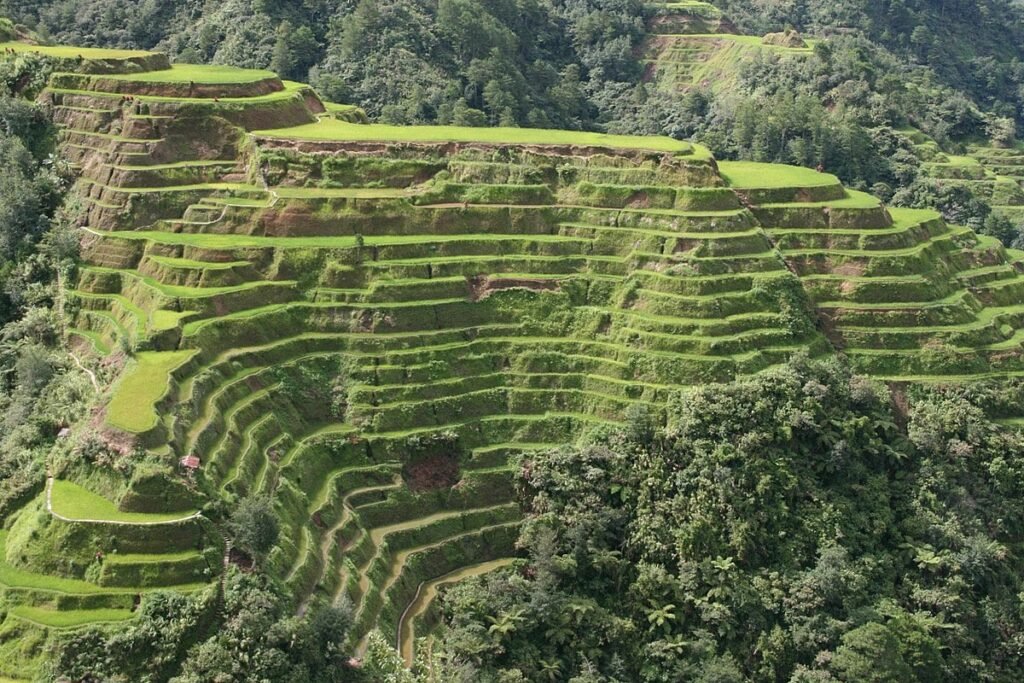
Banaue Rice Terraces, often referred to as the “Eighth Wonder of the World,” are a testament to the incredible engineering and farming ingenuity of the indigenous Ifugao people. Located in the town of Banaue in the Philippines, these terraces are estimated to be over 2,000 years old and were meticulously carved into the Cordillera Central mountain range. Stretching across approximately 10,360 square kilometers, they are a remarkable UNESCO World Heritage site and a must-visit for anyone exploring the Philippines.
The Banaue Rice Terraces serve as a stunning example of sustainable farming practices. They were carved by hand, one stone at a time, into the mountainsides to create flat platforms that could support rice cultivation. These terraces have not only sustained the Ifugao people for centuries but also reflect their deep connection to the land. Today, they remain a living cultural landscape and a remarkable tourist attraction, allowing visitors to admire the lush green fields and explore the unique traditional farming methods that have preserved this incredible heritage for millennia.
2. Batad Rice Terraces
Batad Rice Terraces, nestled within the breathtaking Cordillera mountain range of the Philippines, are a jewel of agricultural and engineering ingenuity. A UNESCO World Heritage site, these terraces showcase the traditional Ifugao farming methods and the rich cultural heritage of the region. Carved out of steep mountainsides over 2,000 years ago, the Batad Rice Terraces feature a distinct amphitheater-like design that has captured the imagination of travelers worldwide.
The rice terraces in Batad are a testimony to the Ifugao people’s deep connection with the land. They are built with great care and precision, using stone walls and hand-carved earthworks to create cascading levels of fields that follow the contours of the mountains. This sustainable and ancient farming practice not only supports the local community but also provides a stunning and picturesque landscape for travelers to explore. Trekkers can follow winding pathways to reach Batad, where they can stay in traditional huts and enjoy the unique culture and history of the region while gazing upon the stunning beauty of the terraces.
3. Tappiya Falls
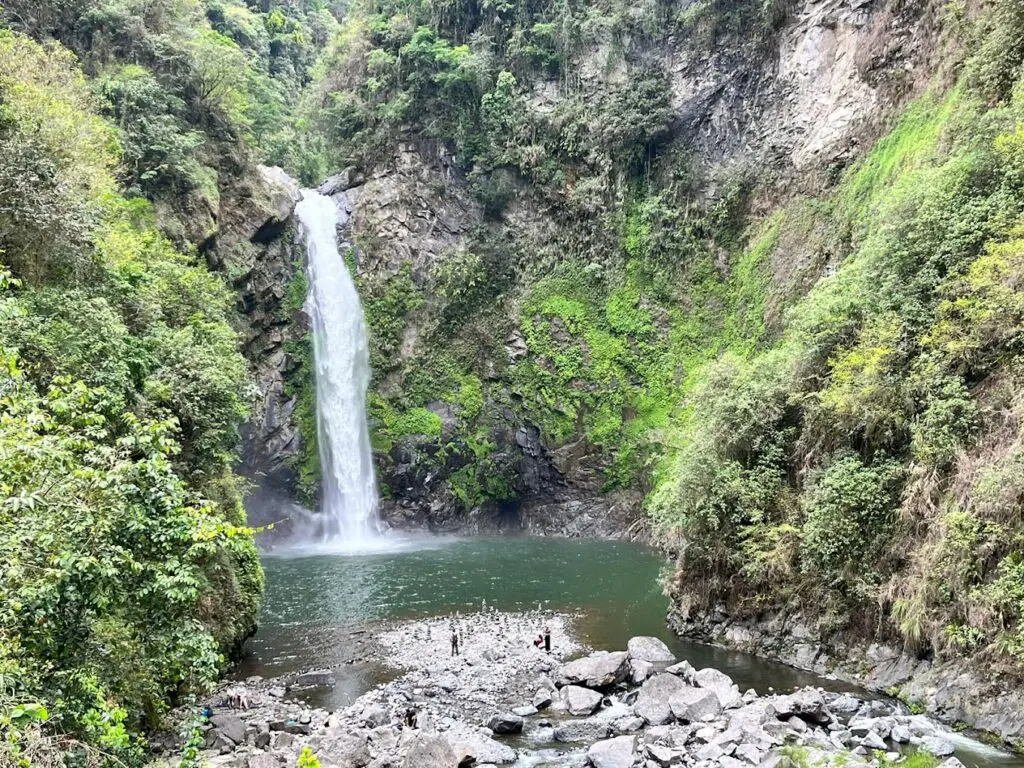
Tappiya Falls, a natural gem hidden amidst the lush beauty of Banaue in the Philippines, is a pristine destination for those who seek the wonders of untouched nature. Located within the ancestral domain of the Batad indigenous community, Tappiya Falls is a testament to the region’s ecological and cultural richness. To reach this cascading wonder, visitors embark on a picturesque hike, taking in terraced rice fields and the rugged grandeur of the mountains.
Tappiya Falls stands at a height of around 70 meters and boasts a serene, emerald-green pool at its base. The trek leading to this natural wonder is as rewarding as the falls themselves, as it allows travelers to connect with the local culture and admire the centuries-old rice terraces. While taking a refreshing dip in the cool waters of Tappiya Falls, one can truly appreciate the tranquil beauty of Banaue and the harmony between its people and the environment.
4. Banaue Museum
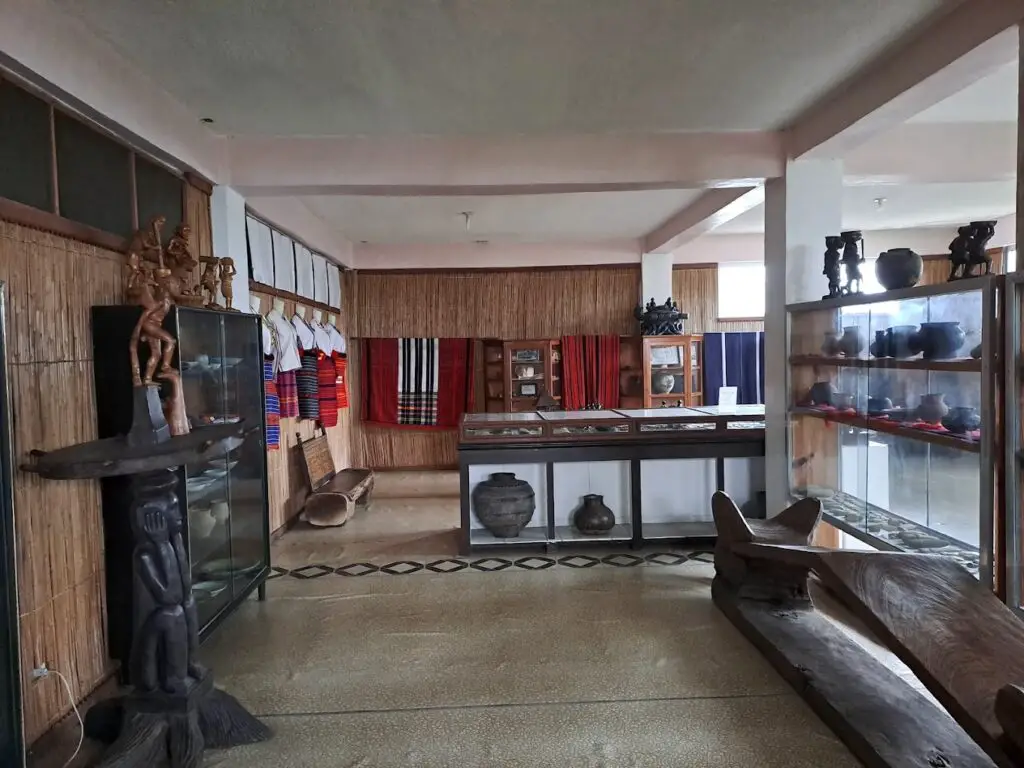
The Banaue Museum, nestled in the heart of Banaue, Philippines, is a captivating cultural repository that provides a deep insight into the heritage, traditions, and history of the Ifugao indigenous people. This museum serves as a bridge connecting visitors to the rich and vibrant cultural tapestry of the region. Inside, one can explore a wide array of exhibits, artifacts, and photographs that narrate the story of the Ifugao people and their remarkable engineering achievements, particularly the world-renowned Banaue Rice Terraces.
The Banaue Museum offers visitors an opportunity to appreciate the artistry of the Ifugao people, from their intricate weaving patterns to their intricate woodwork and metalcraft. Moreover, it educates visitors about the indigenous communities that call this region home, their customs, rituals, and the unique way they have cultivated and sustained the terraced landscapes for generations. A visit to this museum is not only an educational experience but also a chance to respect and celebrate the living culture of the Ifugao people, whose legacy is etched into the mountains of Banaue.
5. Bangaan Rice Terraces
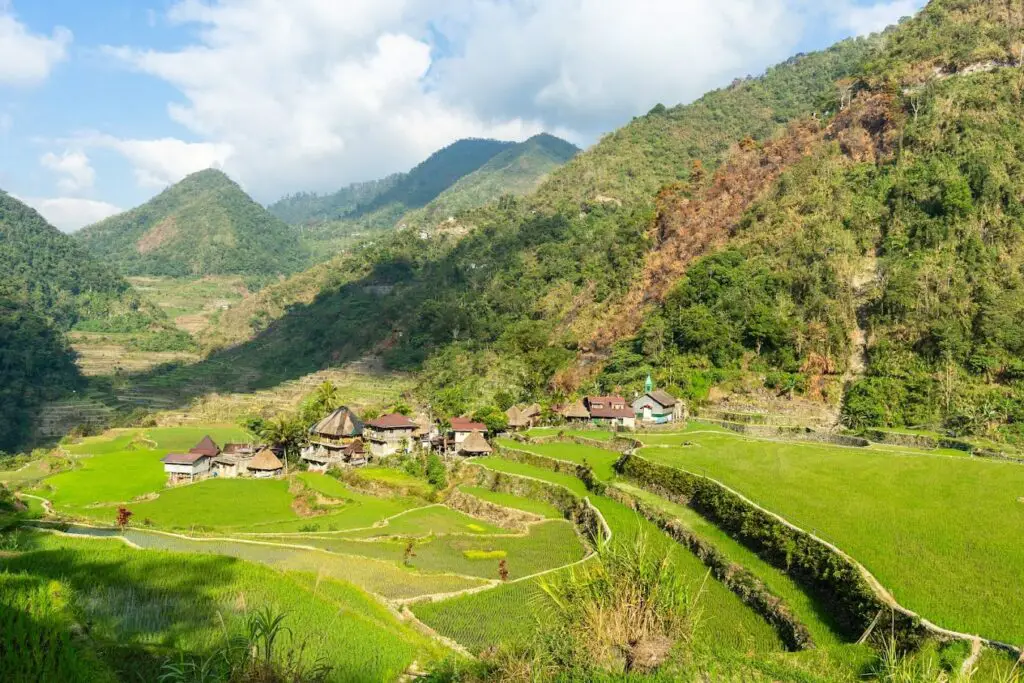
The Bangaan Rice Terraces are a cultural treasure and a living testament to the agricultural ingenuity of the Ifugao indigenous people. These terraces, which have been carefully carved into the mountains for over 2,000 years, showcase the Ifugao’s deep connection with the land and their mastery of terracing techniques. The Bangaan Rice Terraces are often considered as one of the most picturesque and well-preserved in the region.
Visitors to the Bangaan Rice Terraces can not only marvel at the stunning landscape but also engage with the local Ifugao community. The terraces are surrounded by traditional huts and a serene village, offering a glimpse into the everyday life and culture of the people who have meticulously maintained these terraces for centuries. A visit to the Bangaan Rice Terraces is an opportunity to immerse oneself in the cultural and agricultural heritage of the Philippines and witness firsthand the sustainable farming practices that have been passed down through generations.
6. Viewpoint of Banaue
The Viewpoint of Banaue is an iconic vantage point that offers a sweeping panoramic view of the stunning Banaue Rice Terraces. This viewpoint is often the first stop for visitors who want to take in the grandeur of these ancient terraces. Carved into the mountains by the indigenous Ifugao people over 2,000 years ago, the Banaue Rice Terraces are often referred to as the “Eighth Wonder of the World” for their sheer scale and cultural significance. From the viewpoint, visitors can witness the terraces’ awe-inspiring amphitheater-like arrangement, cascading down the slopes with perfect symmetry, creating a verdant tapestry that stretches as far as the eye can see.
The viewpoint is easily accessible by both car and on foot. It provides not only a visual feast but also an opportunity to learn about the history, culture, and agricultural practices of the Ifugao people. Visitors often engage with local guides who share their deep knowledge of the terraces, providing insights into the challenges and traditions that have sustained this UNESCO World Heritage site. It’s a place where nature and culture harmoniously converge, offering an experience that leaves a lasting impression and appreciation for the remarkable heritage of Banaue.
7. Mount Amuyao
Mount Amuyao is an impressive peak that towers over the picturesque town of Banaue. Nestled in the Cordillera Central mountain range of the Philippines, it’s the country’s eighth-highest peak, standing at approximately 2,702 meters above sea level. The mountain is not only a challenge for trekkers and hikers but also an embodiment of rich indigenous culture and natural beauty.
Trekking up Mount Amuyao is a rewarding experience for adventure seekers. The journey takes you through dense forests, river crossings, and traditional Ifugao villages, allowing you to immerse yourself in the local way of life. Upon reaching the summit, trekkers are rewarded with breathtaking views of the Cordilleras, the Banaue Rice Terraces, and even as far as the Sierra Madre mountain range. It’s a hike that combines natural splendor, cultural immersion, and physical accomplishment, making it a must-visit for anyone exploring Banaue.
8. Banaue Public Market
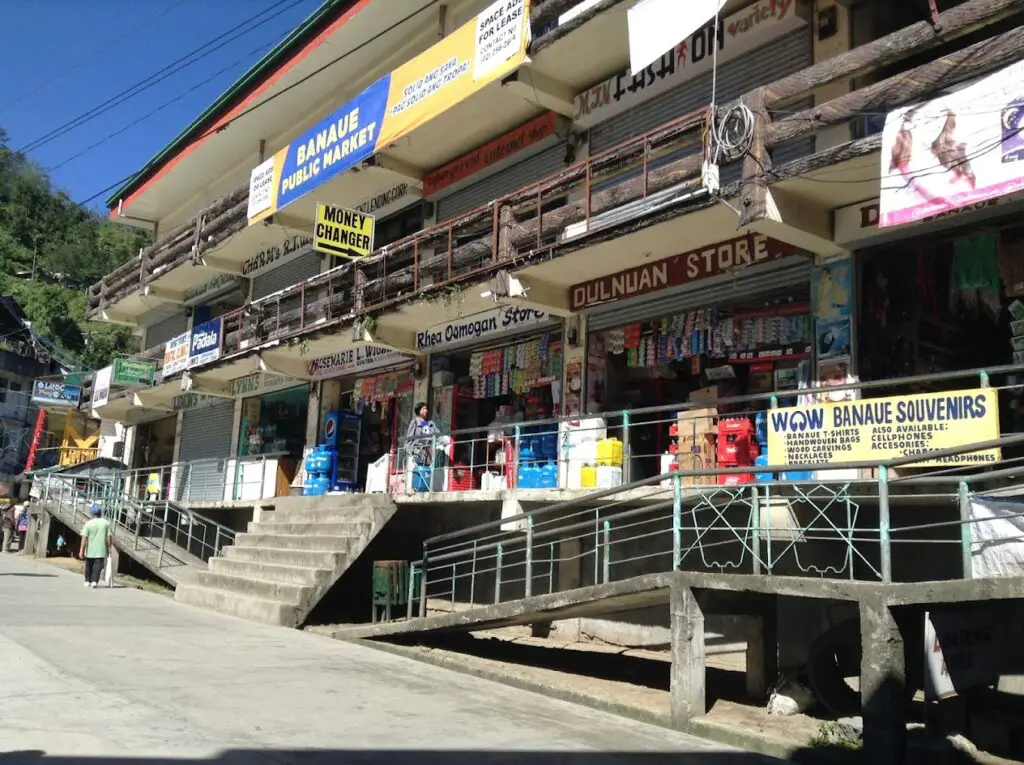
Banaue Public Market is a bustling hub of commerce and culture in the heart of Banaue town. Situated within the stunning Cordillera region of the Philippines, this market offers a unique glimpse into the daily life of the Ifugao people, known for their remarkable rice terraces. The market is an essential stop for travelers looking to immerse themselves in the local culture and find an array of regional products.
Visitors to Banaue Public Market can explore a wide variety of items, from fresh produce, handwoven textiles, and traditional handicrafts to locally made souvenirs. The market is especially renowned for its rice, particularly the heirloom rice varieties produced by the Ifugao community. Exploring this vibrant market, you’ll not only have the chance to shop for authentic, locally crafted goods but also engage with the warm and welcoming Ifugao people, making it an enriching cultural experience in addition to a shopping destination.
9. Hapao Rice Terraces
Nestled within the Cordillera Mountains of the Philippines, the Hapao Rice Terraces in Banaue are a breathtaking testament to centuries of indigenous agricultural engineering. Carved into the mountainsides, these terraces showcase the exceptional skills of the Ifugao people, who have meticulously crafted these landscapes by hand. The Hapao Rice Terraces offer visitors not only a visual marvel but also an insight into the unique farming traditions and cultural heritage of the region.
As you explore the Hapao Rice Terraces, you’ll be struck by the intricate irrigation systems that channel water from natural springs to nurture the rice paddies. The verdant beauty of these terraces, particularly during the growing season when the rice stalks are a vibrant green, provides a remarkable backdrop for hiking and photography. Additionally, visitors can engage with the Ifugao community, gaining a deeper understanding of their traditional farming techniques and way of life. Whether you’re an adventurer, a cultural enthusiast, or a nature lover, the Hapao Rice Terraces offer a captivating experience.
10. Cambulo Village
Cambulo Village is a quaint and culturally rich destination that offers travelers a glimpse into the traditional way of life of the indigenous Ifugao people. This remote village, accessible by foot or a short jeepney ride, provides a serene escape from the bustling city life. The journey to Cambulo is an adventure in itself, with scenic trails that wind through the lush terraced fields and provide breathtaking views of the rice terraces and surrounding mountains.
Upon reaching Cambulo, visitors are greeted by charming thatched-roof huts and a serene ambiance. The village is an excellent place to engage with the Ifugao community, known for their skilled rice terracing, which is a UNESCO World Heritage tradition. You can observe local artisans weaving intricate baskets and experience the warm hospitality of the villagers. Cambulo Village encapsulates the essence of cultural immersion, and it’s a destination that allows you to appreciate the rich heritage of the Ifugao people while enjoying the beauty of the natural surroundings.
11. Tamanud Falls
Tamanud Falls, hidden in the lush landscapes of Banaue, is a captivating natural wonder that beckons adventurous travelers. To reach this enchanting cascade, you’ll embark on a trek through the region’s vibrant rice terraces and forested paths. The journey itself is a memorable experience, offering unparalleled views of the iconic Banaue Rice Terraces.
Upon arriving at Tamanud Falls, you’ll be greeted by the refreshing sight and sound of pristine waters tumbling down moss-covered rocks into a crystalline pool. This natural oasis provides a serene setting for swimming and relaxation, surrounded by the vibrant greenery of the Ifugao mountains. Tamanud Falls is a tranquil escape where you can unwind, connect with nature, and admire the marvelous work of time and water shaping the landscapes of Banaue. It’s a place where you can immerse yourself in the beauty of the Philippines’ natural wonders.
12. Nagacadan Rice Terraces
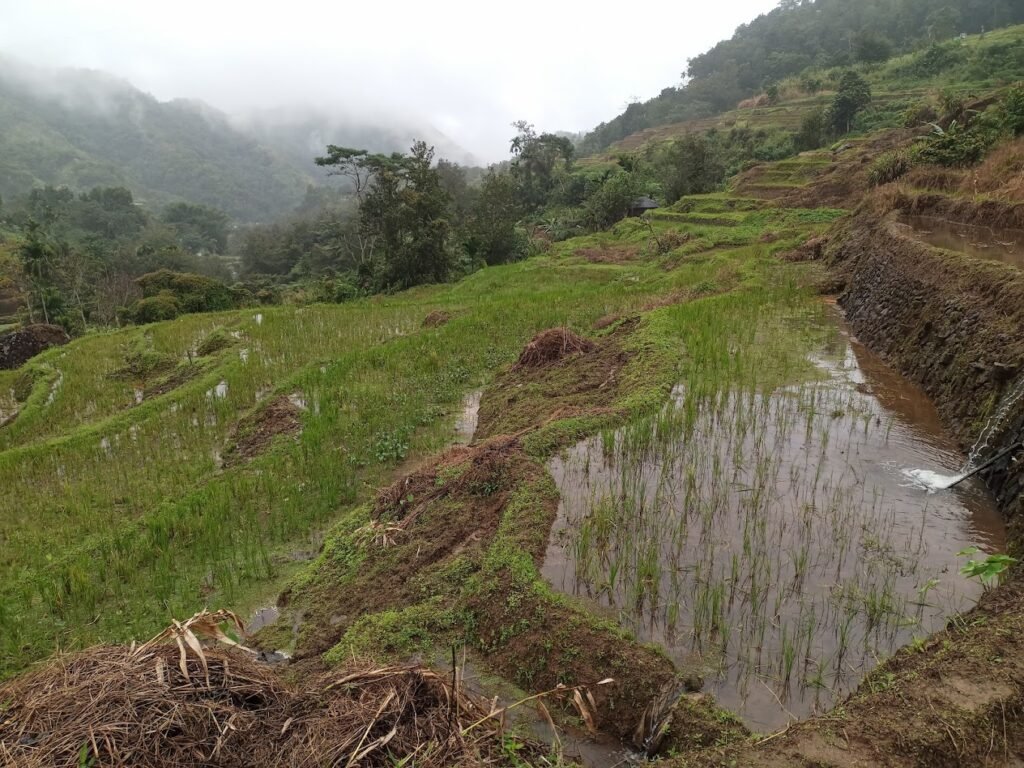
The Nagacadan Rice Terraces in Banaue are a testament to the ingenious agricultural practices of the Ifugao people. Located a short distance from the town center, these terraces are a sight to behold. They cascade down the mountainsides, sculpting the landscape into a stunning patchwork of green fields that stretch as far as the eye can see.
What makes Nagacadan unique is its “spider web” design. These terraces are so intricately crafted that they resemble a spider’s web when viewed from above. The Ifugao people have ingeniously designed an irrigation system that distributes water evenly to each field, ensuring optimal rice cultivation. These terraces provide not only a breathtaking visual spectacle but also offer a glimpse into the rich cultural heritage and sustainable agricultural practices of the Ifugao people. A visit to the Nagacadan Rice Terraces in Banaue is a journey into both natural beauty and the history of human interaction with the environment.
13. Ducligan Hot Spring
Ducligan Hot Spring, nestled in the lush landscapes of Banaue, is a hidden gem for those seeking relaxation and rejuvenation. The natural hot spring, surrounded by verdant forests, offers a serene retreat from the bustling world. Its warm and mineral-rich waters are known for their therapeutic properties, making it an ideal destination for weary travelers.
Visitors to Ducligan Hot Spring can unwind in the soothing waters, which are believed to have healing benefits for various ailments, from muscle aches to skin conditions. The setting itself, amidst the verdant beauty of Banaue, adds to the experience. It’s not only a place to soak away stress but also an opportunity to connect with nature and immerse oneself in the tranquil ambiance of this remarkable destination. Whether you’re coming to heal or simply to relax in a scenic natural oasis, Ducligan Hot Spring promises a rejuvenating escape in the heart of Banaue.
14. Native Village Inn
The Native Village Inn in Banaue is a charming and culturally immersive accommodation that allows travelers to experience the rich heritage of the Ifugao people. Nestled amidst the breathtaking rice terraces, this inn offers a unique blend of traditional and modern comforts. Guests have the opportunity to stay in native huts, crafted with authentic indigenous materials, providing an authentic and unforgettable experience.
The inn also hosts cultural performances, giving visitors a deeper insight into the traditions and customs of the Ifugao community. The warm hospitality of the staff and the spectacular views of the rice terraces make the Native Village Inn a truly remarkable destination. Whether you’re seeking a cultural adventure or simply a peaceful escape in the heart of nature, this inn is a perfect base for exploring the wonders of Banaue and the Cordilleras.
Conclusion
Banaue, with its mesmerizing landscapes and vibrant culture, stands as a place where nature and heritage entwine. The majestic rice terraces, the warmth of the Ifugao people, and the adventurous spirit that fills the mountain air all combine to make Banaue an unforgettable destination. Whether you’re an intrepid explorer seeking thrilling treks or a culture enthusiast yearning for a deeper connection with tradition, Banaue has it all. It’s not just a place to visit; it’s a place to experience, a place to connect, and a place to leave with your heart forever intertwined with its beauty and history.



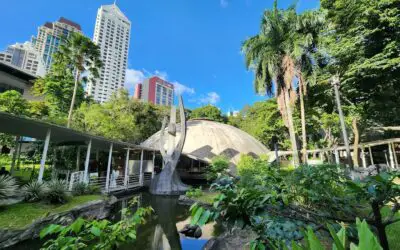
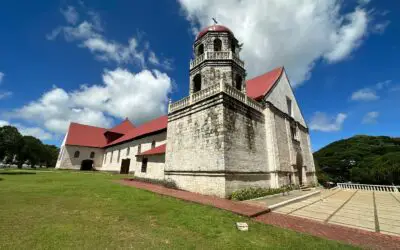
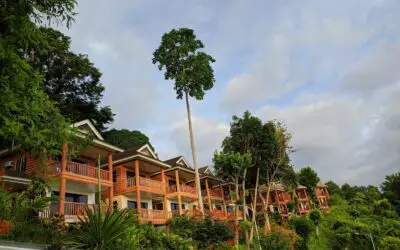
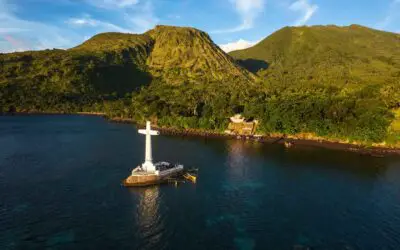
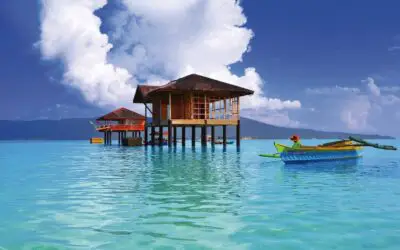
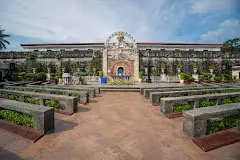
0 Comments